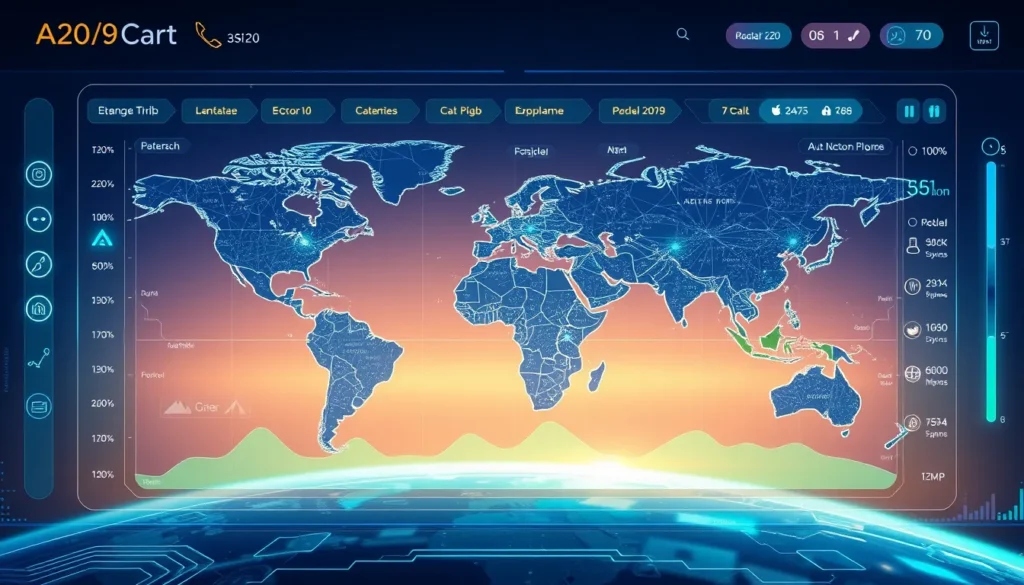Now Reading: Enhancing Enterprise RAG Systems with Sufficient Context
-
01
Enhancing Enterprise RAG Systems with Sufficient Context
Enhancing Enterprise RAG Systems with Sufficient Context

Enhancing Enterprise RAG Systems with Sufficient Context
In today’s fast-paced digital landscape, enterprise RAG systems are at the forefront of AI innovations. By integrating sufficient context, these systems not only improve data retrieval accuracy but also enhance overall decision making. This article explores how leveraging the right data can transform enterprise AI and empower businesses to overcome the limitations of traditional retrieval augmented generation methods.
Understanding Enterprise RAG Systems and Their Challenges
Enterprise RAG systems combine the power of data retrieval and generative AI to produce informed and coherent responses. However, traditional approaches often fall short because they either provide too much irrelevant information or restrict data to such an extent that the context becomes insufficient. A major challenge is filtering the vast amounts of data so that only the most relevant pieces are used, ensuring that the output aligns with enterprise needs.
Key challenges include:
- Overloading the generative AI with noise data
- Failing to filter for accuracy and relevance
- Inadequate feedback loops causing persistent inaccuracies
These challenges underscore the necessity for a refined strategy: ensuring that AI models are equipped with sufficient context.
The Role of Sufficient Context in Enterprise AI
A recent study by Google has emphasized the importance of sufficient context in enterprise RAG systems. This research shows that providing the AI with rich, precise, and dynamically tailored data results in outputs that are both accurate and actionable.
The study reveals that the typical two-step process of retrieving data and generating responses must be rethought. Rather than simply aggregating data, it is vital to focus on quality over quantity. By implementing robust data filtration and advanced selection algorithms, enterprise systems can filter out irrelevant information and highlight only the most significant contextual data.
Benefits of Integrating Sufficient Context
Integrating sufficient context into enterprise RAG systems offers several benefits. Here are some key advantages:
- Improved Accuracy: Systems become more precise, reducing the chances of generating incomplete or misleading responses.
- Enhanced Decision-Making: With clear, context-aware insights, enterprises can make informed decisions rapidly.
- Lowered Operational Costs: Minimizing the need for post-generation corrections reduces human intervention and streamlines operations.
- Scalability: Such systems adapt better over time through continuous feedback loops, ensuring long-term reliability in handling complex queries.
These benefits demonstrate the value of investing in context-aware AI, especially for organizations that manage large volumes of data daily.
How to Implement Sufficient Context in Enterprise AI
A dedicated approach to implementing sufficient context can radically improve the performance of enterprise AI. Here are some actionable steps:
- Evaluate Current Data Retrieval Methods: Begin with a comprehensive review of your existing RAG systems. Identify where the context is lacking and where redundant data may be causing noise.
- Enhance Data Filtration: Implement advanced algorithms to dynamically assess and prioritize data relevancy. By focusing on the quality of the data, the system becomes adept at selecting the precise context required for each query.
- Establish Feedback Loops: Embed robust feedback mechanisms that allow the AI system to learn and improve over time. Regular assessments and updates ensure that the context remains relevant as enterprise data evolves.
- Encourage Cross-Departmental Collaboration: Enterprises benefit from perspectives across different teams. Sharing insights can help refine data filtration processes and ensure that the context provided aligns with business objectives.
- Monitor and Adjust: Continuously test and monitor system performance. Make iterative adjustments based on real-world outcomes to further fine-tune context relevance.
This step-by-step approach is crucial for businesses looking to harness the full potential of enterprise RAG systems.
Dynamic Context Retrieval and Robust Feedback Loops
Dynamic context retrieval is a game changer in the arena of enterprise AI. Instead of static data retrieval methods, dynamic systems assess and tailor the inputs in real time. This ensures that for each query, the AI is fed not only more data but the right data.
Moreover, integrated feedback loops provide a mechanism for the system to evolve. By learning from past interactions and continuously adjusting the data input, the AI becomes more meticulous and efficient. This iterative improvement is essential for maintaining the high quality of responses and ensuring that the solution remains relevant to current enterprise needs.
Real-World Impact and Future Implications
The impact of integrating sufficient context in enterprise RAG systems extends beyond technical enhancements. Organizations that deploy these advanced systems experience tangible improvements in operational efficiency. In industries such as finance, healthcare, and legal sectors, the ability to decipher complex data accurately can lead to significantly better outcomes.
For instance, a finance firm using these enhanced systems can predict market trends more reliably, while a healthcare provider can ensure accurate diagnostics by integrating relevant patient data. The resulting benefits include reduced risk, improved decision-making processes, and a more streamlined approach to handling vast amounts of data.
Conclusion
As enterprises navigate the complexities of AI-driven decision making, the enhancement of RAG systems with sufficient context emerges as a critical success factor. By addressing the shortcomings of traditional models, companies can achieve higher accuracy, greater efficiency, and more reliable outcomes. Implementing these solutions involves more than just advanced technology—it requires a strategic overhaul of data handling practices.
In summary, the future of enterprise AI lies in systems that not only retrieve data but understand the nuances behind it. Embracing sufficient context in enterprise RAG systems is the key to unlocking new levels of performance and innovation, ensuring that organizations remain competitive in a rapidly evolving digital landscape.

























